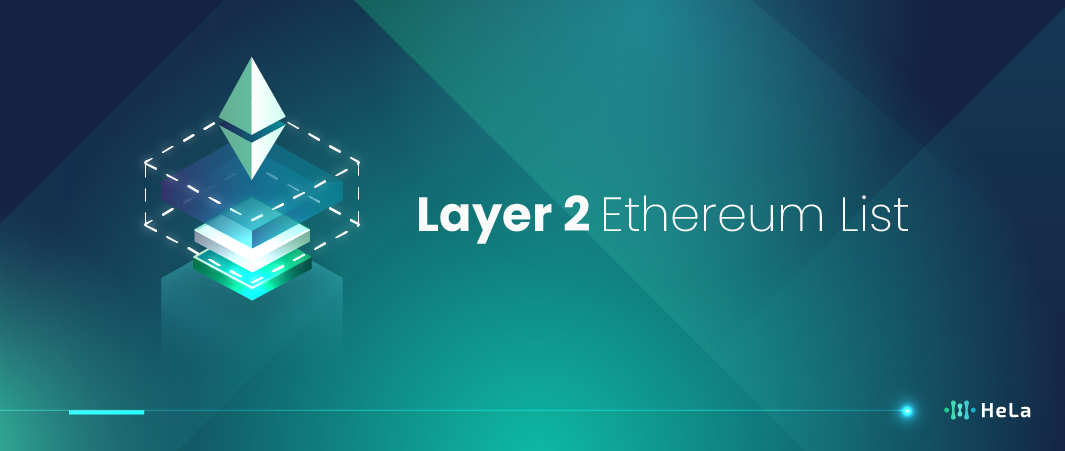The Ethereum network, known for its robust smart contract capabilities, has faced significant scalability challenges. As the demand for decentralized applications (dApps) and decentralized finance (DeFi) services grows, so does the need for efficient and scalable solutions. This is where Layer 2 solutions come into play. By offloading transactions from the main Ethereum blockchain, these solutions enhance scalability, reduce fees, and improve transaction speeds. In this article, we’ll explore the top 10 Layer 2 Ethereum solutions to consider in 2025.
Layer 2 solutions are not just a temporary fix; they represent a significant step forward in blockchain technology. As Ethereum 2.0 continues to evolve, these solutions will play a crucial role in ensuring the network can meet the growing demands of its users. Let’s dive into the top 10 Layer 2 solutions and understand why they are worth your attention this year.
Integration with Ethereum 2.0

Ethereum 2.0, also known as Eth2, aims to transition Ethereum from a proof-of-work (PoW) consensus mechanism to proof-of-stake (PoS), significantly enhancing its scalability and sustainability. Layer 2 solutions will complement Ethereum 2.0 by providing additional scaling capabilities.
The combination of Ethereum 2.0 and Layer 2 solutions will create a more robust and scalable network. Eth2’s sharding technology will distribute the network load, while Layer 2 solutions will handle off-chain transactions, resulting in a highly efficient system. This synergy will enable Ethereum to support a growing number of dApps and users without compromising on performance or security.
Also Read: 15 Top Crypto Custodians to Know in 2025
Moreover, as Ethereum 2.0 continues to evolve, we can expect deeper integration with Layer 2 solutions. This integration will further enhance the user experience, making it seamless to switch between Layer 1 and Layer 2, depending on the specific needs of the application. This flexibility will be a key factor in the widespread adoption of Ethereum 2.0 and its Layer 2 counterparts.
Top 10 Layer 2 Ethereum Solutions to Consider in 2025

Layer-2 Ethereum solutions are essential in addressing the scalability issues inherent to Ethereum’s Layer-1 by processing transactions off-chain and reducing the load on the main network. Here is an updated list of ten Layer-2 Ethereum solutions to consider in 2025:
1. Arbitrum
Arbitrum is one of the most widely adopted Layer-2 solutions that utilizes Optimistic Rollups to enhance transaction speed and reduce costs. It enables users to perform all the activities they do on Ethereum, but with significantly lower fees and faster transaction times.
Arbitrum’s ecosystem supports a wide range of decentralized applications (dApps) and DeFi protocols. Its high throughput and Ethereum-level security have made it a preferred choice for developers and users alike.
2. Optimism
Optimism is a Layer-2 solution designed to improve Ethereum’s scalability through Optimistic Rollups. By minimizing the changes required from the Ethereum mainnet, Optimism allows for seamless integration of existing Ethereum dApps with reduced transaction costs and enhanced speed.
Optimism is also building a “Superchain” platform, which aims to unite multiple Layer-2 chains into a single, cohesive network, further advancing scalable and decentralized computing.
3. Polygon (MATIC)
Polygon is a multichain ecosystem offering a variety of scaling solutions, including zkRollups, Plasma, and Proof-of-Stake (PoS) chains. It is known for its high throughput of 65,000 transactions per second (TPS) and low transaction fees.
Polygon’s compatibility with Ethereum and other blockchains makes it a versatile platform for DeFi applications, NFT marketplaces, and other dApps. It has a robust developer ecosystem and supports popular protocols like Aave, SushiSwap, and Curve.
4. zkSync Era
zkSync Era leverages zero-knowledge rollups (zkRollups) to provide secure and efficient scaling for Ethereum. This technology allows zkSync to process thousands of transactions off-chain while maintaining Ethereum’s security standards.
zkSync aims to preserve the foundational values of Ethereum, such as decentralization and self-sovereignty, at scale. The protocol supports a wide range of applications, from payments to complex DeFi solutions.
5. Immutable X
Immutable X focuses on enhancing the Web3 gaming experience by using zkRollup technology to offer high throughput, zero gas fees, and robust security. This Layer-2 solution is optimized for NFT projects and gaming platforms, providing a seamless and cost-effective environment for developers and gamers.
Immutable X’s infrastructure supports quick transactions and true ownership of digital assets, making it a popular choice for NFT marketplaces and gaming dApps
6. Base
Developed by Coinbase, Base is a Layer-2 platform that offers a secure and scalable environment for deploying Ethereum dApps. Base provides a developer-friendly environment with comprehensive documentation and robust support, attracting a variety of projects, from DeFi protocols to NFT marketplaces. Its growing ecosystem and significant TVL growth reflect its increasing popularity and trust within the crypto community.
7. Starknet
Starknet employs zk-Rollup technology to validate transactions off-chain, enabling high throughput and low fees. Starknet’s use of STARK proofs allows it to process millions of transactions per second while maintaining the security and decentralization of the Ethereum mainnet.
It offers a developer-friendly environment with powerful tools and a familiar programming language, Cairo. Starknet’s growing ecosystem includes a wide range of dApps in DeFi, NFTs, gaming, and more.
8. Mantle
Mantle utilizes a modular architecture and optimistic rollups to provide efficient and low-cost transaction processing. Mantle’s structure separates execution, settlement, consensus, and data availability across different network nodes, enhancing transaction efficiency and significantly reducing costs compared to Ethereum’s base layer. Mantle’s developer-first approach and extensive ecosystem support make it a promising Layer-2 solution with rapid adoption.
9. Blast
A new entrant in the Layer-2 space, Blast leverages Optimistic Rollups to offer minimal transaction costs and robust security. Launched in early 2024, Blast has quickly gained traction by focusing on reducing gas fees and providing a user-friendly interface.
Its unique features, such as native yields for ETH and stablecoins, and gas subsidies for developers, make it a compelling option for developers and users looking for cost-effective scaling solutions.
10. dYdX v3
Initially operating as a Layer-2 DEX for perpetual swaps, dYdX is transitioning to its own blockchain built with the Cosmos SDK. This transition allows dYdX to handle more transactions and share trading fees with validators and stakers. The new dYdX chain offers enhanced transaction capabilities, making it a powerful and professional exchange for trading crypto assets.
Therefore, Layer-2 solutions are pivotal in enhancing Ethereum’s scalability, security, and transaction efficiency. As the blockchain landscape evolves, these solutions will continue to play a crucial role in supporting the growth and adoption of decentralized applications.
Benefits of Layer 2 Solutions

Layer 2 solutions are revolutionizing the Ethereum network by addressing some of its most pressing challenges. As the demand for Ethereum’s services continues to grow, these solutions play a crucial role in enhancing the network’s efficiency and user experience.
Enhanced Transaction Throughput
Layer 2 solutions significantly enhance transaction throughput, enabling the Ethereum network to process many more transactions per second compared to Layer 1. This is achieved by offloading the majority of transactions from the main Ethereum blockchain to secondary layers, where they can be processed more efficiently. As a result, the primary chain is less congested, allowing for quicker and more numerous transactions.
This increased capacity is essential as Ethereum’s popularity continues to grow, with more users and decentralized applications (dApps) relying on its infrastructure. Without these enhancements, the network could become bottlenecked, slowing down the entire ecosystem and limiting its potential for widespread adoption.
Reduced Transaction Fees
Layer 2 solutions also play a critical role in reducing transaction fees on the Ethereum network. High gas fees have been a major pain point for Ethereum users, especially during times of network congestion. These fees can be prohibitively expensive, deterring new users and limiting the utility of dApps. By offloading transactions to Layer 2, where processing costs are significantly lower, users can enjoy much lower fees.
This makes Ethereum more accessible to a broader audience, including those in regions where high transaction costs would otherwise be a barrier to entry. Lower fees also encourage more frequent and diverse use of the network, from microtransactions to complex smart contract interactions, enhancing the overall economic activity within the Ethereum ecosystem.
Improved User Experience
Layer 2 solutions improve user experience by providing faster transaction confirmation times. This is particularly important for applications that require quick transaction finality, such as gaming, real-time financial services, and other interactive dApps. In traditional Layer 1 operations, users might have to wait several minutes for transaction confirmations, which can be frustrating and impractical for real-time applications. Layer 2 solutions significantly reduce this latency, often providing near-instantaneous confirmations.
This improvement not only enhances the responsiveness of Ethereum-based applications but also increases their reliability and user satisfaction. By offering a smoother and more efficient user experience, Layer 2 solutions help foster greater engagement and adoption of Ethereum’s services.
Layer 2 solutions are essential for the scalability and usability of the Ethereum network. By enhancing transaction throughput, reducing fees, and improving user experience, they ensure that Ethereum can continue to grow and serve a global user base effectively. As the blockchain ecosystem evolves, Layer 2 solutions will likely play an increasingly vital role in maintaining the performance and accessibility of Ethereum, driving innovation and expansion in the decentralized space.
Challenges Facing Layer 2 Solutions
Despite their benefits, Layer 2 solutions face several challenges. One major issue is interoperability. With multiple Layer 2 solutions available, ensuring they can seamlessly interact with each other and with the main Ethereum network is critical. Without interoperability, users and developers may face fragmentation, limiting the overall effectiveness of Layer 2 scaling.
Also Read: Proof of Stake (PoS): The Definition, Mechanism, Benefits and Challenges
Another challenge is security. While Layer 2 solutions are designed to be secure, they still rely on the underlying security of the Ethereum mainnet. Any vulnerabilities in the Layer 2 implementation or the bridge connecting it to Ethereum could pose risks to users. Ensuring robust security measures are in place is essential for the widespread adoption of Layer 2 solutions.
Lastly, user adoption and education are significant hurdles. Many users and developers are still unfamiliar with how Layer 2 solutions work and how to integrate them into their existing workflows. Providing comprehensive education and support resources will be crucial in driving adoption and maximizing the benefits of Layer 2 technology.
Use Cases of Layer 2 Solutions
Layer 2 solutions have a wide range of use cases that extend beyond just improving transaction speeds and reducing fees. One notable use case is in the realm of decentralized finance (DeFi). With the explosive growth of DeFi, Layer 2 solutions provide the scalability needed to support a large number of transactions, making DeFi applications more efficient and accessible.
Another important use case is in gaming. Blockchain-based games require quick and cost-effective transactions to provide a seamless user experience. Layer 2 solutions enable instant transactions and micro-payments, which are essential for in-game purchases and interactions. This makes blockchain gaming more attractive to both developers and players.
Additionally, Layer 2 solutions play a crucial role in the non-fungible token (NFT) space. Minting and trading NFTs can be expensive and slow on the Ethereum mainnet. Layer 2 solutions like Immutable X offer a scalable and gas-free platform for NFTs, making it easier for artists and collectors to participate in the NFT market without worrying about high fees and slow transactions.
Conclusion
As we move into 2025, the importance of Layer 2 solutions for Ethereum cannot be overstated. They provide the much-needed scalability and efficiency required to support the growing ecosystem of decentralized applications and services. By reducing transaction fees and improving transaction speeds, Layer 2 solutions make Ethereum more accessible and user-friendly.
The top 10 Layer 2 solutions mentioned in this article represent the forefront of innovation in blockchain scalability. From Optimism and Arbitrum to Polygon and zkSync, these solutions offer diverse approaches to scaling Ethereum, each with its unique strengths and capabilities. As the Ethereum network continues to evolve, these Layer 2 solutions will play a crucial role in shaping its future.
Looking ahead, the integration of Layer 2 solutions with Ethereum 2.0 promises to create a highly scalable and efficient blockchain platform. This will unlock new possibilities for developers, businesses, and users, driving the next wave of innovation in the blockchain space. Whether you’re a developer, investor, or enthusiast, staying informed about Layer 2 solutions will be essential in navigating the evolving landscape of Ethereum.
Disclaimer: The information provided by HeLa Labs in this article is intended for general informational purposes and does not reflect the company’s opinion. It is not intended as investment advice or recommendations. Readers are strongly advised to conduct their own thorough research and consult with a qualified financial advisor before making any financial decisions.

Joshua Soriano
I am a writer specializing in decentralized systems, digital assets, and Web3 innovation. I develop research-driven explainers, case studies, and thought leadership that connect blockchain infrastructure, smart contract design, and tokenization models to real-world outcomes.
My work focuses on translating complex technical concepts into clear, actionable narratives for builders, businesses, and investors, highlighting transparency, security, and operational efficiency. Each piece blends primary-source research, protocol documentation, and practitioner insights to surface what matters for adoption and risk reduction, helping teams make informed decisions with precise, accessible content.
- Joshua Soriano#molongui-disabled-link
- Joshua Soriano#molongui-disabled-link
- Joshua Soriano#molongui-disabled-link
- Joshua Soriano#molongui-disabled-link

